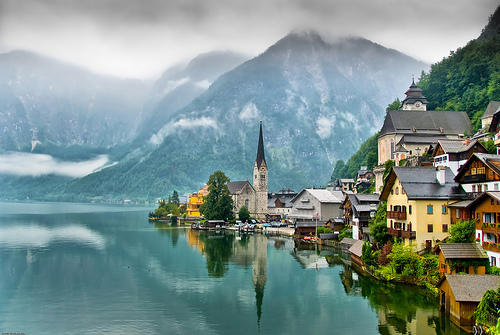Upper Austria is one of the most significant regions of the country. Find out about the different factors that contribute to the importance of Upper Austria.
The region that can be classified as upper Austria is known by the name of Oberosterreich province. The capital of the province is Linz. Upper Austria is the area that borders with Germany in the west and touches the Czech Republic in the north. The whole region is overwhelmingly hilly.
Upper Austria has the Danube River and three of its tributaries flowing through it namely, the Enns, Inn and the Traun. It also includes a sizable part of the Salzkammergut resort area. The economy is spear headed by agricultural activities such as dairy farming and cattle breeding. These are the most important economic activities of the region.
Upper Austria is rich with a lot of other precious gifts by nature. Vast expanses of salt mines, gas fields and precious oil fields are amongst the treasures of Upper Austria. The region also has a number of large electric power stations.
The region also has its industrial areas such as Linz, the Traun andd Ager Valleys. These regions are full of manufacturing plants of varied commodities such as chemicals, aluminum, iron and steel, motors, ships, trucks, agricultural machinery, shoes, sports equipment, processed foods, textiles, optic utensils and many more.
Upper Austria History & Geography
At the time of the Roman occupation Upper Austria came under the province of Noricum. In 1156 it came under the rule of the Babenberg dukes of Austria. The Turks managed to invade the province in the 16th century. The area has seen more than its fair share of war as the thirty years of battles due to Napoleon’s campaign was fought in Upper Austria.
Today Upper Austria is counted amongst the nine states of Austria with Linz being its capital. The total area known as Upper Austria measures around 11,980 km square. The total population of Upper Austria is estimated to be around 1.3 billion. In terms of population Upper Austria is considered to be the third largest state of Austria whereas in terms of land size it is ranked fourth.
The majority of the people living in Upper Austria are Roman Catholics by faith. Around 7.2% of the total population of Upper Austria is of foreign decent. The bulk of these are from the former Yugoslavia that amounts to about 53%. Greek and Turkish minorities are also amongst the inhabitants of Upper Austria.
Upper Austria is a very important province in many respects. It has been divided into four main regions. They are Innviertel, Mühlviertel, Traunviertel and Hausruckviertel, The state is further divided into 15 smaller districts and three main statutarstadte. They are Linz, which is the capital along with Steyr and Wels.
Many of the country’s export items are produced in this important region of Upper Austria. The wide range of manufacturing plants produces various items that not only suffice the needs of the local market but are exported to all corners of the world. Hence Upper Austria is a province upon which the economy of Austria greatly depends.





